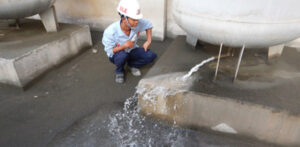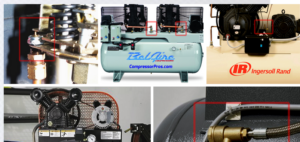Reciprocating air compressors are widely used in industrial and commercial applications, but they require regular maintenance and occasional troubleshooting to keep them running efficiently. By following proper maintenance procedures and quickly addressing issues, you can extend the life of your compressor and minimize costly downtime.
Routine Maintenance
Regular maintenance is crucial for reciprocating compressors. Key maintenance tasks include:
- Checking and changing the oil regularly, typically every 500-1000 hours of operation
- Inspecting and tightening belt tension
- Cleaning or replacing air intake filters
- Draining moisture from the air tank daily
- Checking for air leaks in the system
- Inspecting valves and replacing if worn
- Lubricating moving parts as needed
Adhering to the manufacturer’s recommended maintenance schedule is essential for optimal performance.
Common Problems and Troubleshooting
Even with proper maintenance, issues can arise. Here are some common problems and troubleshooting steps:
Low Pressure or Reduced Air Delivery:
- Check for air leaks in the system
- Inspect intake and discharge valves for damage
- Verify proper belt tension
- Check for clogged air filters
Excessive Noise or Vibration:
- Tighten loose mounting bolts
- Check for worn bearings or connecting rods
- Inspect valve plates for damage
- Verify proper oil level
Overheating:
- Clean cooling fins and check for proper ventilation
- Verify correct oil level and type
- Check for stuck valves or clogged intercooler
Oil in Compressed Air:
- Check for overfilled crankcase
- Inspect piston rings and cylinder walls for wear
- Verify proper oil viscosity for operating conditions
Compressor Won’t Start:
- Check power supply and electrical connections
- Inspect pressure switch for proper operation
- Verify unloader valve is functioning correctly
Water in Compressed Air:
- Drain receiver tank more frequently
- Install or service air dryer system
- Check aftercooler for proper operation
How the Compressor Controller Helps
The Compressor Controller is an innovative device that can significantly improve the operation and maintenance of reciprocating air compressors. Here’s how it helps:
- Precise Pressure Control: The digital pressure sensor provides more accurate pressure readings than traditional mechanical switches, allowing for tighter control of start/stop cycles and reducing energy waste.
- Temperature Monitoring: By continuously monitoring pump temperature, the controller can detect overheating issues early, preventing damage and extending compressor life.
- Intelligent Unloading: The controller manages the unloader valve more effectively than mechanical systems, reducing starting loads on the motor and minimizing moisture in compressed air.
- Automatic Drain Control: Integrated drain valve control helps remove moisture from the system more consistently, improving air quality and reducing corrosion.
- Performance Tracking: The controller logs operating hours, cycle counts, and other key metrics, making it easier to schedule maintenance and track system performance over time.
- Smart Diagnostics: Built-in error detection and reporting helps quickly identify issues like sensor failures, overheating, or abnormal air consumption patterns.
- Remote Monitoring: Some models allow for remote monitoring and control, enabling proactive maintenance and reducing the need for on-site inspections.
By integrating these advanced features, the Compressor Controller not only improves day-to-day operation but also simplifies maintenance and troubleshooting. It provides operators with more information and control, allowing them to address potential issues before they become serious problems. This proactive approach can significantly reduce downtime, extend equipment life, and improve overall system efficiency.



